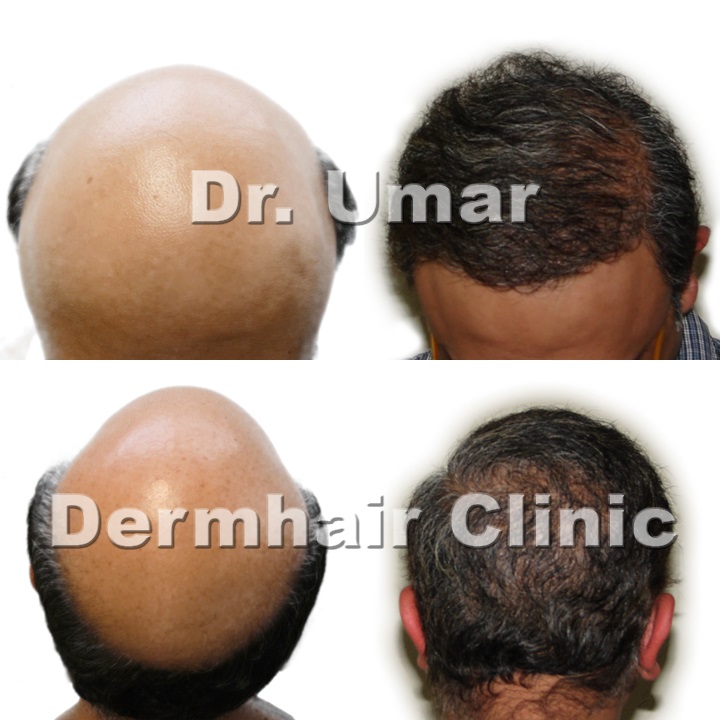Many people are eagerly waiting for hair cloning to be available as a medical procedure. Hair loss affects numerous individuals world wide. And it is understandable that there is a strong need for acquiring a higher number of healthy thriving follicles.
Understanding What Hair Cloning Really Is
Hair cloning is not about creating follicles from a single cell. Instead, precursor cells are harvested and multiplied. These include:
- Derma Papilla cells
- Keratinocytes
Derma Papilla cells are located at the bottom of the hair follicle. This area is also referred to as the bulb. These cells have the potential to stimulate other cells such as those in existing follicles. And this property may provide some assistance in hair growth.
It is also thought that derma papilla cells can stimulate keratinocytes to form new follicles in a lab culture. Keratinocytes are a prominent type of cell that make up about 90% of the epidermis.
Once the right number of cells has been attained, they are injected back into the scalp. The cultured follicles may produce the rudiments of hair growth. And theoretically, these structures can be implanted into bald areas of the scalp as well.
Challenges in Hair Cloning
As it stands, hair cloning may seem promising. But as it continues to develop, it needs to overcome certain limitations.
- Once extracted, the precursor cells may behave differently in lab.
Derma papillae are valued for their ability to stimulate other cells. And with this comes the hope that they will help create new follicles. But the tendency to lose their inductive properties can negate such possibilities.
- Injecting cultured cells will not ensure proper hair growth patterns.
Hair on the head grows in distinct orientations and angles. While this can be replicated by a skilled hair transplant surgeon, there is currently no way to ensure that these patterns will be maintained in hair cloning procedures.
- Possibility of adverse reactions from the body
Injecting cultured cells may pose the risk of allergic or other adverse reactions from the body. Researchers need to refine the procedure to avoid potential hazards for the patient.
Those Who Would Benefit Most From Hair Cloning
Mild to moderate cases of hair loss can be addressed quite well with hair restoration which uses follicles extracted from areas of the head where hair is abundant.
But there are more extreme cases characterized by a significant shortage of usable follicles on the head. These include:
- Severely bald individuals (Norwood 6-7)
- Patients who need to repair regretful outcomes from prior surgeries, which exhausted their head donor supply.
Theoretically, hair cloning can produce a higher quantity of follicles. But at the moment, it is still facing the aforementioned limitations. The processes require additional refinement and further research to create the desired outcomes for patients.
Body Hair Transplant By UGraft To the Rescue
In the meantime, is there another way to attain more follicles for fuller coverage? Those who are interested in this possibility would certainly find hope in body hair transplant procedures performed with uGraft. With this methodology developed by Dr. Umar, large donor pools up to around 20,000 can be harvested using supplies from the beard region and the head (to create a more uniform looking texture).
Regular techniques in FUE hair transplant are capable of extracting follicles from the head. But there are two areas of limitations when it comes to acquiring follicles on other areas:
- Unique growth patterns and delicate nature of body follicles
- Need for exceptional healing outcomes require more specialized tools and techniques.
UGraft tools and methods address both these challenges, making it possible to create abundant supplies of donor follicles that significantly fuller coverage to be an actual reality.
Dr Umar’s work in this field has been published in several peer reviewed scientific journals including:
Those who are interested in the idea of acquiring healthy new follicles to reverse the signs of hair loss should educate themselves on what hair cloning and uGraft actually entail.
A Reliable Way to Achieve Greater Coverage With UGraft
Hair restoration through cloning requires further refinements before being commercially available. Also it is anticipated that such procedures will carry a substantial price tag.
At the moment, modern transplantation procedures performed by a skilled surgeon remain as the most reliable way to reverse the signs of hair loss.
The prime objective of actually getting more hair (no matter how bald a patient is) can be reliably achieved with uGraft procedures.
UGraft is a comprehensive surgical methodology. It uses highly specialized tools to overcome the challenges of extracting body hair follicles. These devices include features to:
- Safely separate the follicular structures from its environment, without risk of damage or buriel from the punch edge
- Create the most optimal wound sizes and shapes to allow excellent healing to occur without traces of visible scars on the body.
By serving as a reliable system for harvesting body follicles, uGraft procedures offer the ability to create large quantities of donor grafts.
This patient, for example reversed his severe baldness through the insertion of 8,000 uGrafts during his first procedure.
He also underwent a second procedure which involved the addition of 4,000 grafts to add fullness and density

Here is a video which features his personal feedback about his experience.
Here is another Norwood 7 patient who also chose uGraft to reverse his severe baldness. 10,500 grafts were used for his results.
In addition to those who are severely bald, repair patients comprise another group in need of large donor supplies. This patient was wearing a hair piece for fourteen years due to poor results from a strip surgery. He underwent two uGraft procedures. The first used 9,000 grafts. The second used 5,000 grafts. He is quite thankful that he is finally free from needing his toupee.
Here are two other patients who needed additional follicle grafts to achieve the coverage they wanted and thus benefited from the use of body hair grafts.
To learn more about this patient’s experience after his first uGraft procedure, click here.

